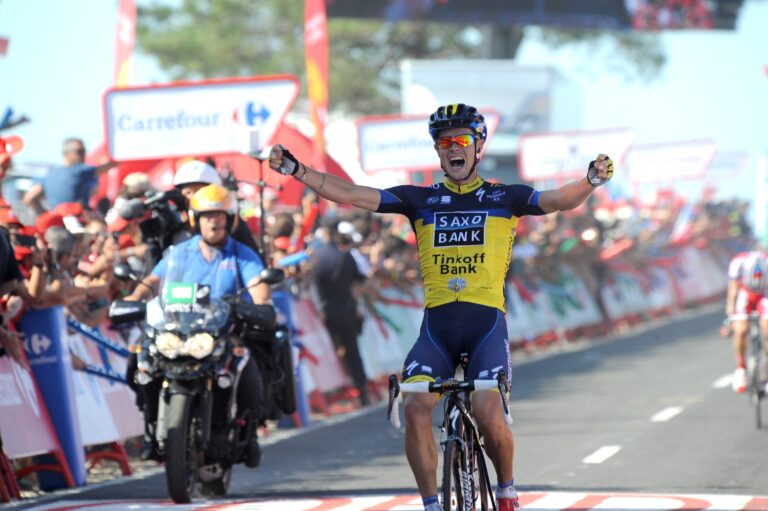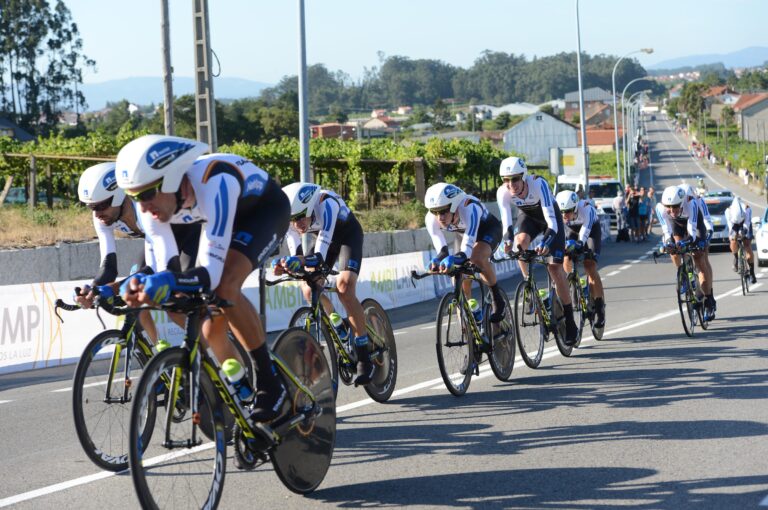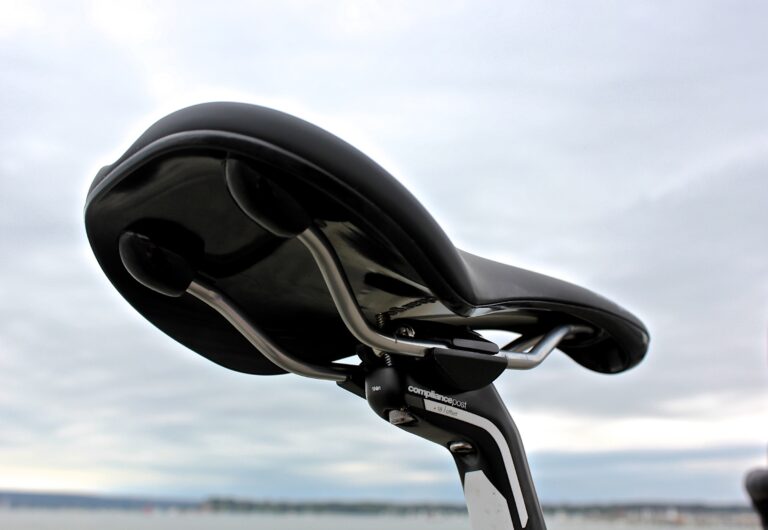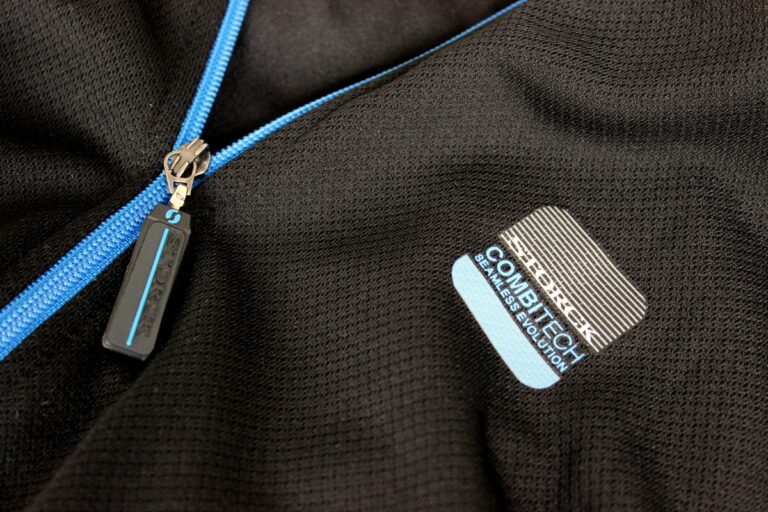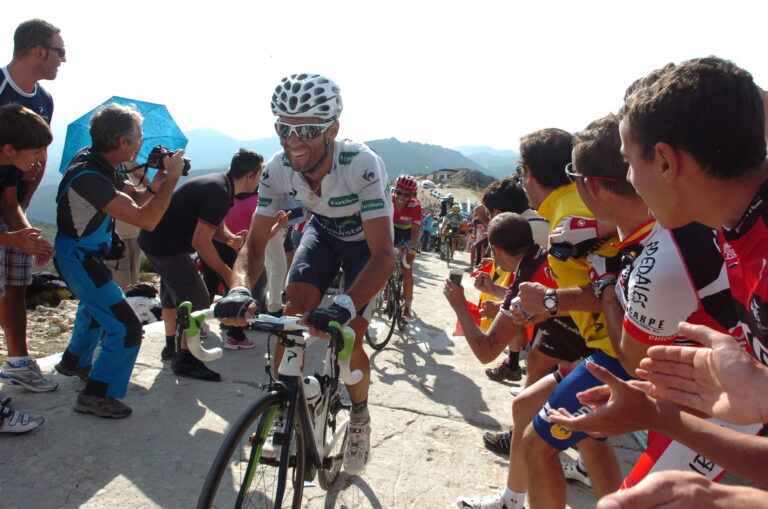The Canyon Ultimate CF SLX is one of two road frames supplied to Katusha – and, on this occassion, RoadCyclingUK, too. We’ve had a test bike arrive at RoadCyclingUK in the colours of the Russian WorldTour team.
The Ultimate CF SLX is described by Canyon as “the light way to ride fast”, with a claimed weight of 790g (for a size large) putting it among the lightest frames available. The Aeroad CF, meanwhile, is the machine preferred by Joaquim Rodriguez, third at the Tour de France.
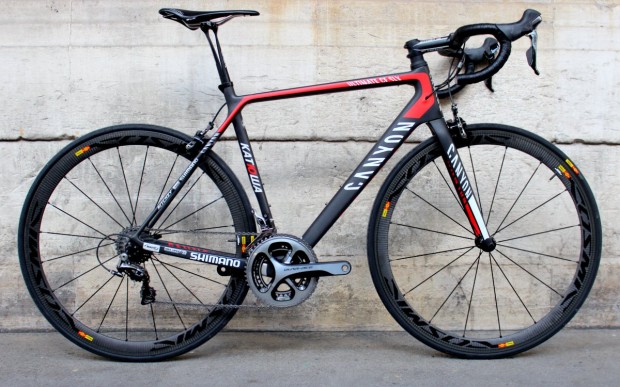
Back to the Ultimate CF SLX and first thing you notice is that it’s light – very light. In fact, our build weighs just 6.48kg on RCUK’s ParkTool digital scale, and Canyon tell us they’ve been able to get it close to 6kg. It’s also a stunning machine.
Our test bike is something of a custom build. The frame came direct from the team, hence the additional sponsor logos on the chainstays, and is dressed in 11-speed, mechanical Shimano Dura-Ace. We’ve called in Mavic’s new’s CC40C carbon clincher wheels (which we will also be reviewing separately), while an aluminium Ritchey WCS cockpit, Canyon VCLS 2.0 seatpost and Selle Italia SLR saddle complete the build.
The frame was redesigned for 2013 to be lighter and stiffer than its previous incarnation. Canyon say that in order to achieve both objectives, they’ve had to completely overhaul the frame, rather than just update the existing model.
Canyon have dropped the weight by introducing carbon dropouts on the frame and fork. The rear derailleur hanger is mounted to the dropout using four screws; the two-piece hanger envelops the dropout, increasing the width of the connection between frame and derailleur and, according to Canyon, increasing rigidity.
The current frame also uses a PressFIt bottom bracket, made entirely from carbon fibre and losing the aluminium inserts of the previous model, in order to shave a few more grams.

Canyon say the frame is made from a higher proportion of Ultra High Modulus carbon fibres and, as a result, they’ve been able to reduce the total surface area of the frame – flattening the toptube, for example – to save a bit more weight. As for the seattube, it’s the third version of Canyon’s Maximus design, and has been significantly slimmed down to boost comfort, but without sacrificing stiffness thanks to its connection with a wider bottom bracket. While we’re talking comfort, Canyon’s Vertical Comfort, Lateral Stiffness (VCLS) technology infuses basalt into the seatstays, fork and seatpost as basalt fibres are said to have up to four times more elasticity than carbon fibres.
All cables are now routed internally, as you’d expect from a frame of this rank. Canyon say their engineers considered the integration of cables when developing the frame in order to give the bike a clean finish, while improving aerodynamics. As a result, the cable entry points have been placed as close as possible to the headtube so the cable outers don’t rub on the frame, while the cables are aligned at an acute angle to reduce friction. Finally, as far as the cables are concerned, the guides on the bottom bracket contain 15 per cent Teflon, again to reduce friction.
It’s worth noting, however, that the Ultimate CF SLX frame comes in two versions, one for mechanical cables and one for electronic cables – not both. That is to say, you select which option you want when you buy the frame, and you’d need a whole new frame if, for example, you later decided you wanted to switch from a mechanical to an electronic groupset.
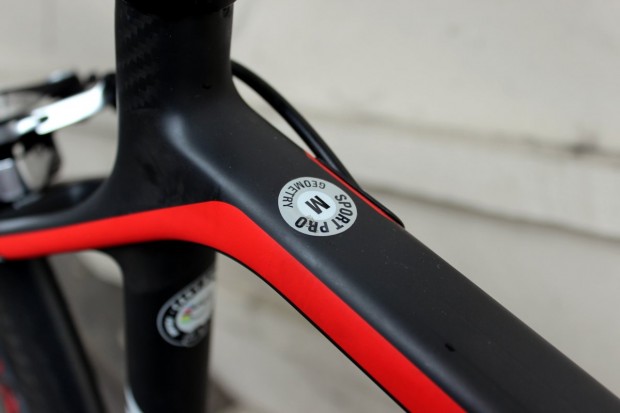
Otherwise, the headtube, which has a new flattened profile, still tapers from 1-1/4″ to 1-1/2”, while the hollow Acros headset is an eye-catching design which uses a ramped collar to preload the bearings, rather than a traditional expander bung. Canyon’s One-One-Four SLX fork slots into the frame. The gap between fork legs has been widened to allow for chunkier tyres.
The VCLS 2.0 split seatpost, by the way, is an optional upgrade (for £111.89 more) available on any spec, and is said to offer 20mm of travel to build more compliance into what Canyon say is already a comfortable frame. Canyon have also supplied us with a regular VCLS seatpost and we’ll compare the two.
The frame uses Canyon’s ‘Sport Pro’ geometry, which they say offers a “sportily-extended position that is not too extreme”. Our medium sample (the Ultimate CF SLX is available in six sizes, from XS to XXL) is Canyon’s equivalent to a 56cm frame, and has a 545mm seattube, 549 toptube, low 150mm headtube, 73.25 and 73.5 head and seattube angles, and a compact 980.4mm wheelbase.
Canyon operate a direct sales model, whereby you – the customer – buy your bike through the Canyon website and it is delivered straight to your door. It cuts out the middle man – the shop – and enables Canyon to ensure their bikes are very competitively priced. While this model isn’t universally popular – independent bike shops, for example, are unlikely to appreciate their absence from Canyon’s supply chain – it gives the German brand a significant pricing advantage.
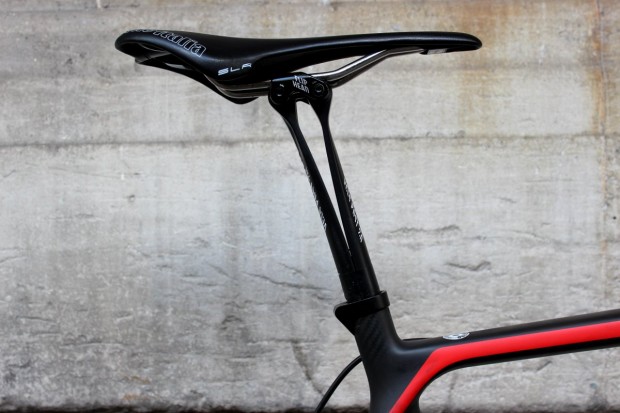
Speaking of which, the Canyon Ultimate CF SLX is available as a frameset only for £1,739, or in one of 11 builds (with a range of Shimano, SRAM and Campagnolo options), ranging from the Shimano Ultegra-equipped Ultimate CF SLX 7.0 for £2,609, to the Shimano Dura-Ace Di2-equipped Ultimate CF SLX 9.0 ETE for £5,469. If you want a Katusha-liveried frame like ours, the Ultimate CF SLX Team comes with Shimano Dura-Ace Di2 and Mavic R-Sys wheels for £4,949.
Testing is well underway – the Ultimate CF SLX was a faithful companion at the Etape du Tour earlier this month – and we’ll file our full report once we’ve logged more miles.
Website: Canyon


